COLLECTING POSTAL STRIPS
|
I really don’t know how to introduce this subject, so I
will just barge in and start talking. You probably are well aware that I
am collector. I have seriously and formally collected coins, stamps, golf
balls, and ancestors, and casually collected other objects.
Coins and stamps involved significant costs for the
collectibles alone – to collect a quarter costs
at least 25 cents.
Unused stamps usually cost at least face value. Displays and containers
for collectibles were also costly. Access to ancestry data varied from
free to some costs for membership. Logo golf ball collecting was
nearly free. The first year of collecting I found 4000 balls by simply
beating the roughs! (Most of them were, of course, not very good condition
and/or without logos).
Walking around in Maui, I have found shiny objects that turned into a collection
costing zero! |
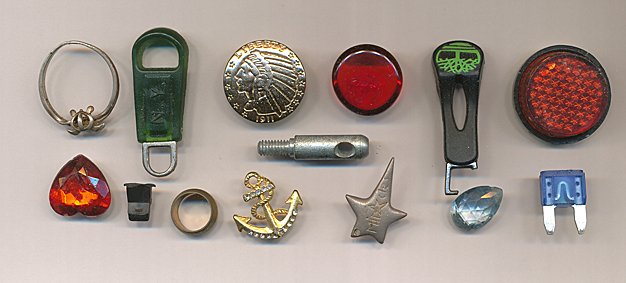 |
|
Turtle ring, zipper pull, motorcycle control cover, game token, zipper pull,
reflector, heart, plastic wedge, ring, jewelry anchor, silver star, jewel,
fuse, gadget in middle.
Recently, I have spent many hours preparing a category of items that fascinated
me and that kids might use as games, collections or whatever.
The collectibles are free and could be accumulated by anyone who gets mail!
The items are the active top sections of envelopes, packages, cards, etc.
involved in the incomings and outgoings of our postal system.
I call them postal strips. Namely, the interesting items
include return address, USPS imprints, postage machine imprints, stamps,
messages, and any other visible attributes.
Preparation consists of trimming off parts of the item that might be
uninteresting or private.
I could imagine (myself) collecting by: Size, Paper color, Postal classification, Stamp value, Postal machine value, Return address, Uniqueness, Duplicates, Etc. |
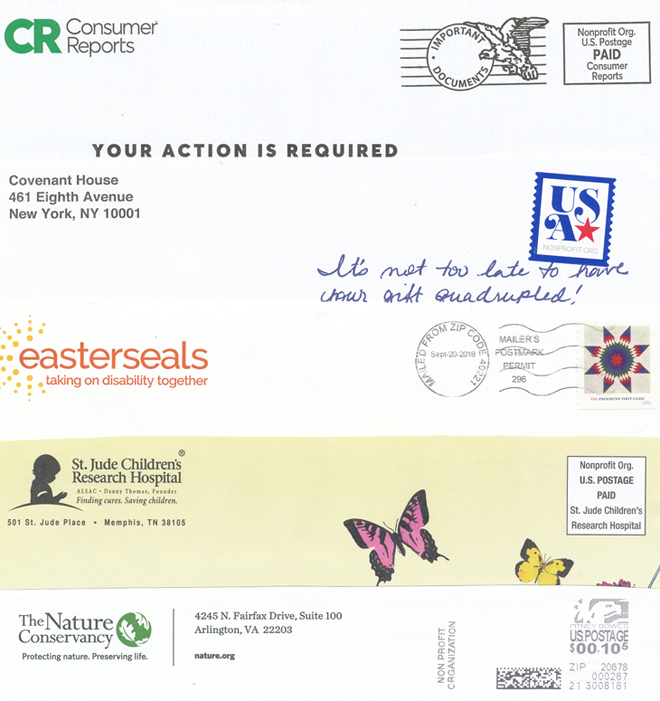 |
|
Here are five random samples of the entire postal strip items after trimming.
Other sample groups do not include the entire strip, but concentrate on
the attribute(s) discussed. |
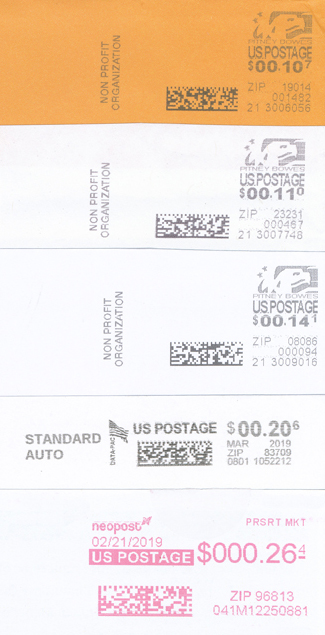
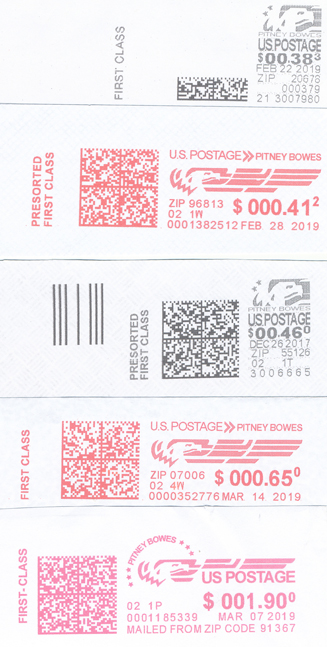 |
|
Postage meter images contain a wealth of information.
This sample group is sorted by postal value, but they could be sorted by zip
code, date, postal class, or even brand of meter! |
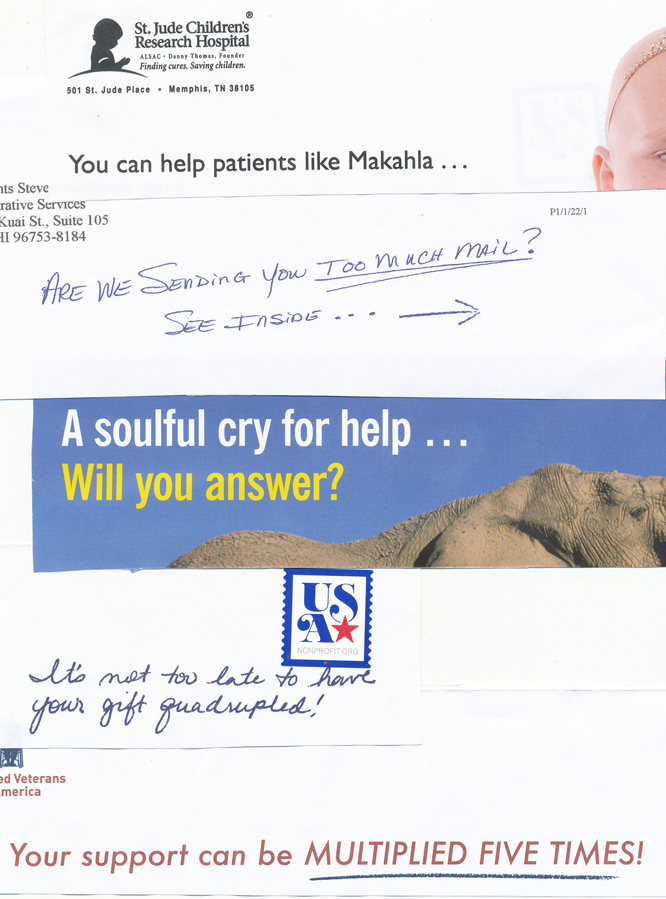 |
|
Messages may be placed almost any place on an envelope and
are perfect for collectors since they may have
any subject! |
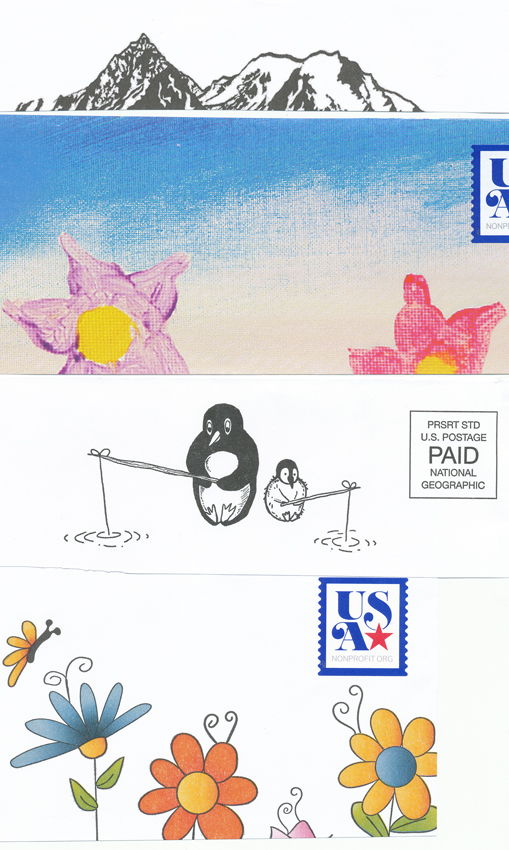 |
|
Images also are virtually infinite and can appear on any part or all of an
envelope. |
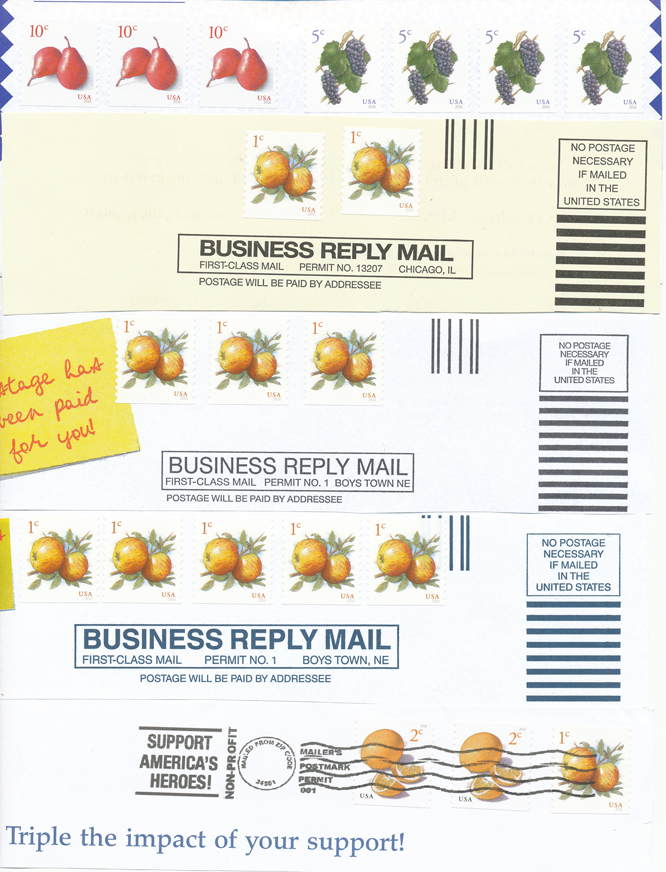 |
|
I’ll let you figure out what these strips mean. Certainly
part of the mystery of postal strip collecting! |
|
THE POSTAL STRIP GAME
I estimate that I currently have about a thousand postal
strips. I guess that, like most folks, I would add about twenty a week
from normal mail receipts. Let’s say we have three kids who want to
participate in this collection game.
To introduce the game, we would provide a large envelope,
box or folder for each kid, starting with a “randomly” sorted ten strips and the
first “Postage Hour” would be an examination of the strips and identification of
the collectible nature of the attributes. The images in this Ponogram
might provide a source for discussion.
Subsequent weekly or bi-weekly Postage Hours would be the addition of another
ten strips to each participant and a guided joint session of incorporating the
new additions.
As collections progress, we might help them list
interesting categories and samples. As participants progress, they may
specialize and trade strips. We might also expect questions like:
What are postal classifications? First class,
pre-sorted first class, non-profit organization, etc.
Explain messages. Many are obvious, many come from
charities, and some are truncated.
What are Zip codes? I’ll bet you can handle this.
Challenge – get strips with references to the most states.
Challenge – get strips with most unique values, return addresses, etc.
AFTERWORD
I really enjoyed this, but then I’m a collector. If
my “target audience” fails to show an interest, I will be all over the postal
meter images. There seems to be no limit to unique values and if there is
a limiting factor it would be finding a source for strips! |
|
|